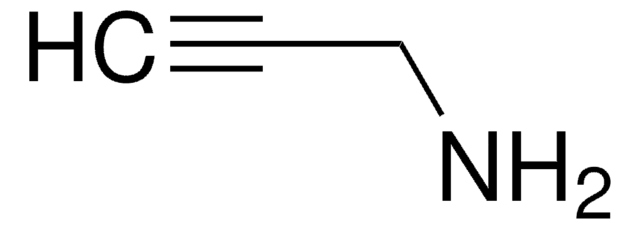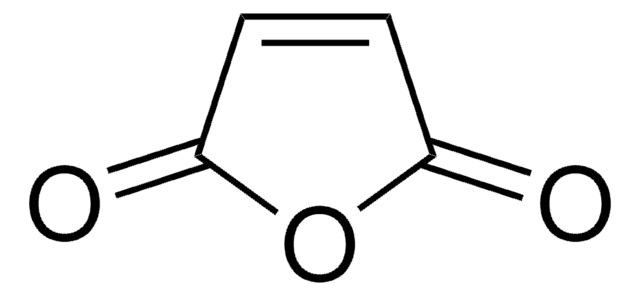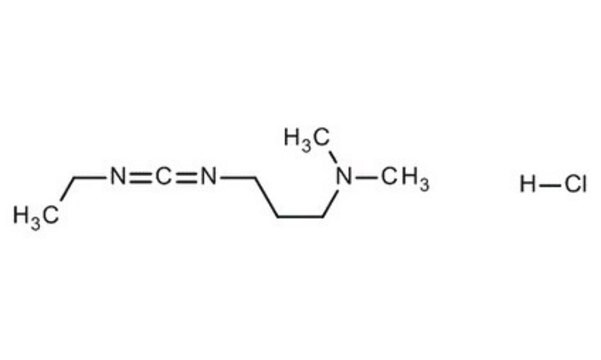91445
10,12-Tricosadiynoic acid
≥98.0% (GC)
Sinônimo(s):
Tricosa-10,12-diynoic acid
Faça loginpara ver os preços organizacionais e de contrato
About This Item
Fórmula empírica (Notação de Hill):
C23H38O2
Número CAS:
Peso molecular:
346.55
Beilstein:
1880414
Número MDL:
Código UNSPSC:
12352100
ID de substância PubChem:
NACRES:
NA.22
Produtos recomendados
Nível de qualidade
Ensaio
≥98.0% (GC)
Formulário
crystals
condição de armazenamento
protect from light
pf
56-60 °C
grupo funcional
carboxylic acid
cadeia de caracteres SMILES
CCCCCCCCCCC#CC#CCCCCCCCCC(O)=O
InChI
1S/C23H38O2/c1-2-3-4-5-6-7-8-9-10-11-12-13-14-15-16-17-18-19-20-21-22-23(24)25/h2-10,15-22H2,1H3,(H,24,25)
chave InChI
DIEDVCMBPCRJFQ-UHFFFAOYSA-N
Procurando produtos similares? Visita Guia de comparação de produtos
Categorias relacionadas
Descrição geral
10,12-Tricosadiynoic acid, also known as Tricosa-10,12-diynoic acid, is a monomeric amphiphilic diacetylene fatty acid characterized by long paraffinic chains on both sides of the diacetylene moiety. This compound is often used in the synthesis of polymerizable monolayers and Langmuir-Blodgett multilayers.
Aplicação
- Acid-responsive color transition in polymer assemblies: 10,12-Tricosadiynoic acid is employed in the development of acid-responsive polydiacetylene-Na(+) assemblies, showcasing a unique red-to-blue color transition. This property is significant for applications in smart sensors and visual indicators in various industrial processes (Saymung et al., 2024).
- Colorimetric sensing capabilities: The synthesis of polydiacetylene vesicles incorporating 10,12-Tricosadiynoic acid demonstrates their utility as colorimetric sensors. This application is particularly valuable in the detection of microbial peptides, contributing to advancements in food safety and pharmaceutical analysis (Yadav and Tiwari, 2021).
Código de classe de armazenamento
11 - Combustible Solids
Classe de risco de água (WGK)
WGK 3
Ponto de fulgor (°F)
Not applicable
Ponto de fulgor (°C)
Not applicable
Equipamento de proteção individual
Eyeshields, Gloves, type N95 (US)
Escolha uma das versões mais recentes:
Já possui este produto?
Encontre a documentação dos produtos que você adquiriu recentemente na biblioteca de documentos.
Os clientes também visualizaram
Max Weston et al.
Analytica chimica acta, 1148, 238190-238190 (2021-02-01)
The incorporation of colorimetric sensors as quality indicators in food packaging is an exciting new area of research that could improve food management. The standard approach, however, demands a reliable interface between the sensor and the food and risks food
Lars Hoff et al.
Journal of surfactants and detergents, 14(4), 585-593 (2011-10-01)
The ultrasound contrast agents Echovist(®) and Levovist(®) (Bayer AG, Schering AG, Germany) are based on the release of gas bubbles from milled α-d-galactose. In diagnostic ultrasound, for this class of contrast agents, there is a need for prolonged contrast duration.
Sofiya Kolusheva et al.
Sensors (Basel, Switzerland), 12(5), 5572-5585 (2012-07-11)
Non-invasive detection and monitoring of lethal diseases, such as cancer, are considered as effective factors in treatment and survival. We describe a new disease diagnostic approach, denoted "reactomics", based upon reactions between blood sera and an array of vesicles comprising
Roberto Diego Ortuso et al.
Soft matter, 13(8), 1728-1736 (2017-02-07)
We have demonstrated colorimetric and fluorescence detection of a peptide, melittin, based on polydiacetylene (PDA) made of 1,2-bis(10,12-tricosadiynoyl)-sn-glycero-3-phosphocholine (DC(8,9)PC). The PDA used in this work has a phosphocholine headgroup, which mimics peptide-cell membrane interactions better than the conventional PDAs with
Manoj Kumar Yadav et al.
Applied biochemistry and biotechnology, 182(1), 142-154 (2016-11-16)
The colorimetric assay is phospholipid/polydiacetylene vesicle-based assay used for the detection of membrane-acting peptides. Bacteriocins and halocins are antimicrobial peptides known to kill target cells by membrane disruption. Therefore, the assay was applied for high-throughput (HTP) screening of bacteriocins and
Nossa equipe de cientistas tem experiência em todas as áreas de pesquisa, incluindo Life Sciences, ciência de materiais, síntese química, cromatografia, química analítica e muitas outras.
Entre em contato com a assistência técnica









